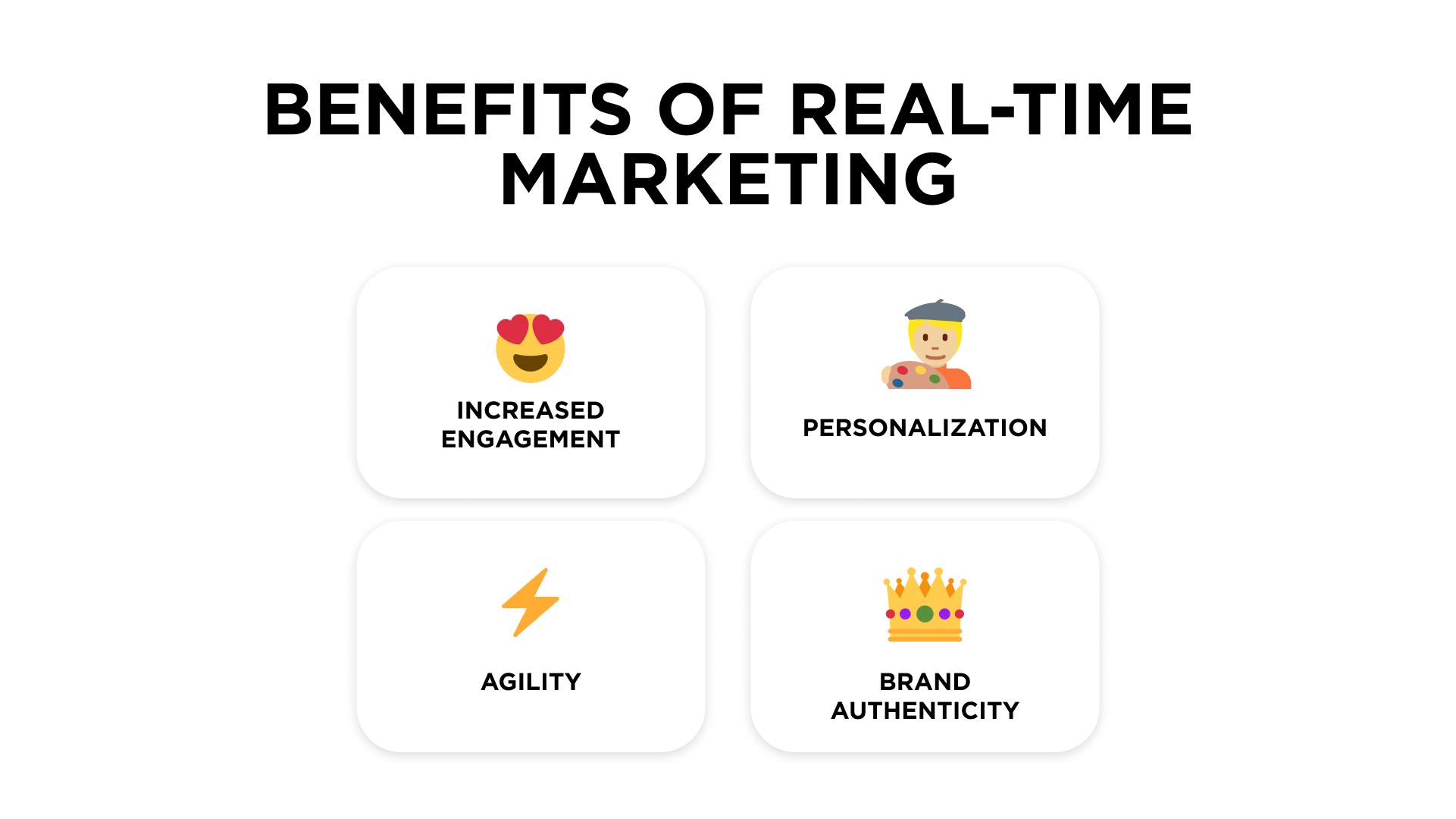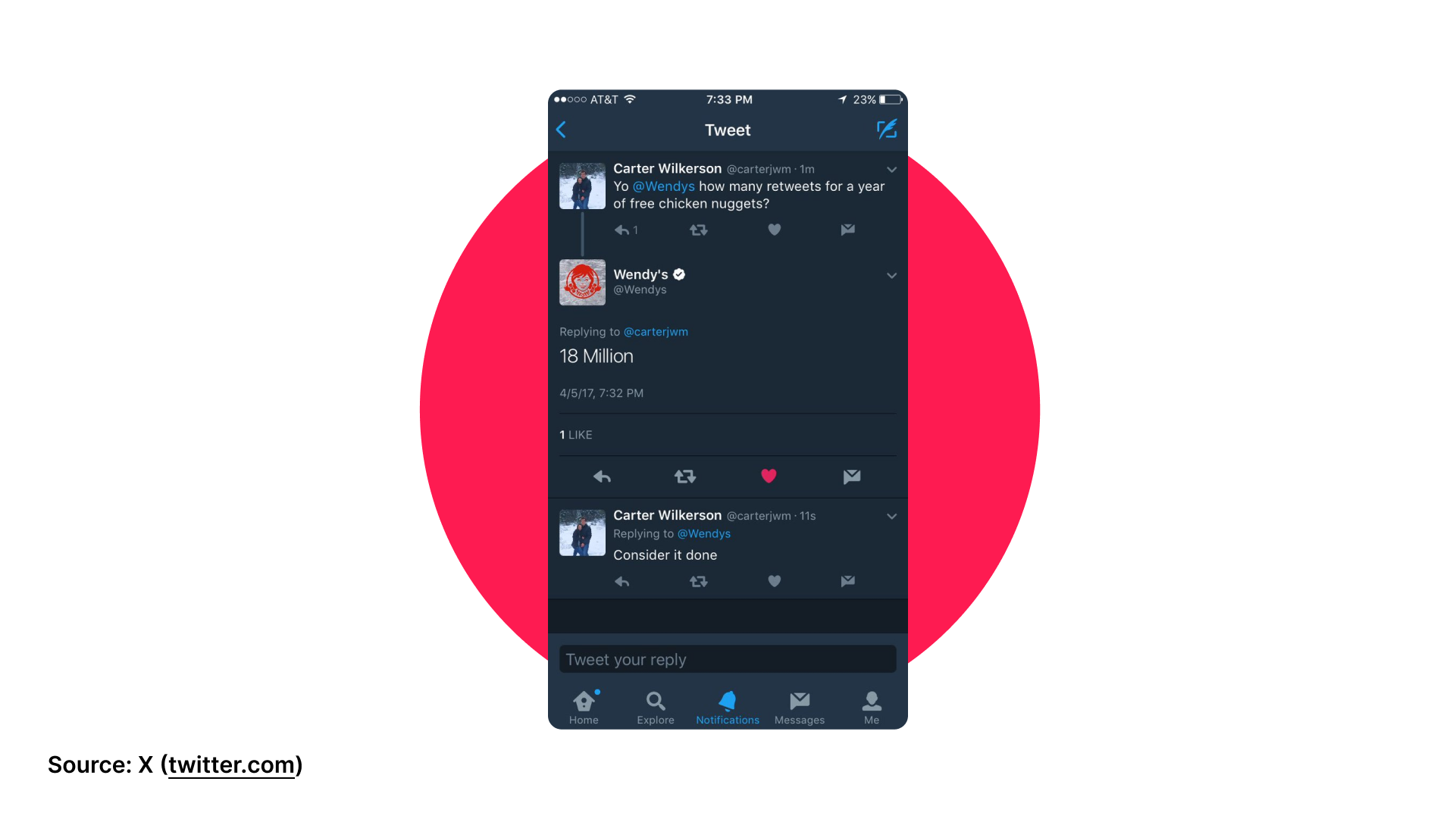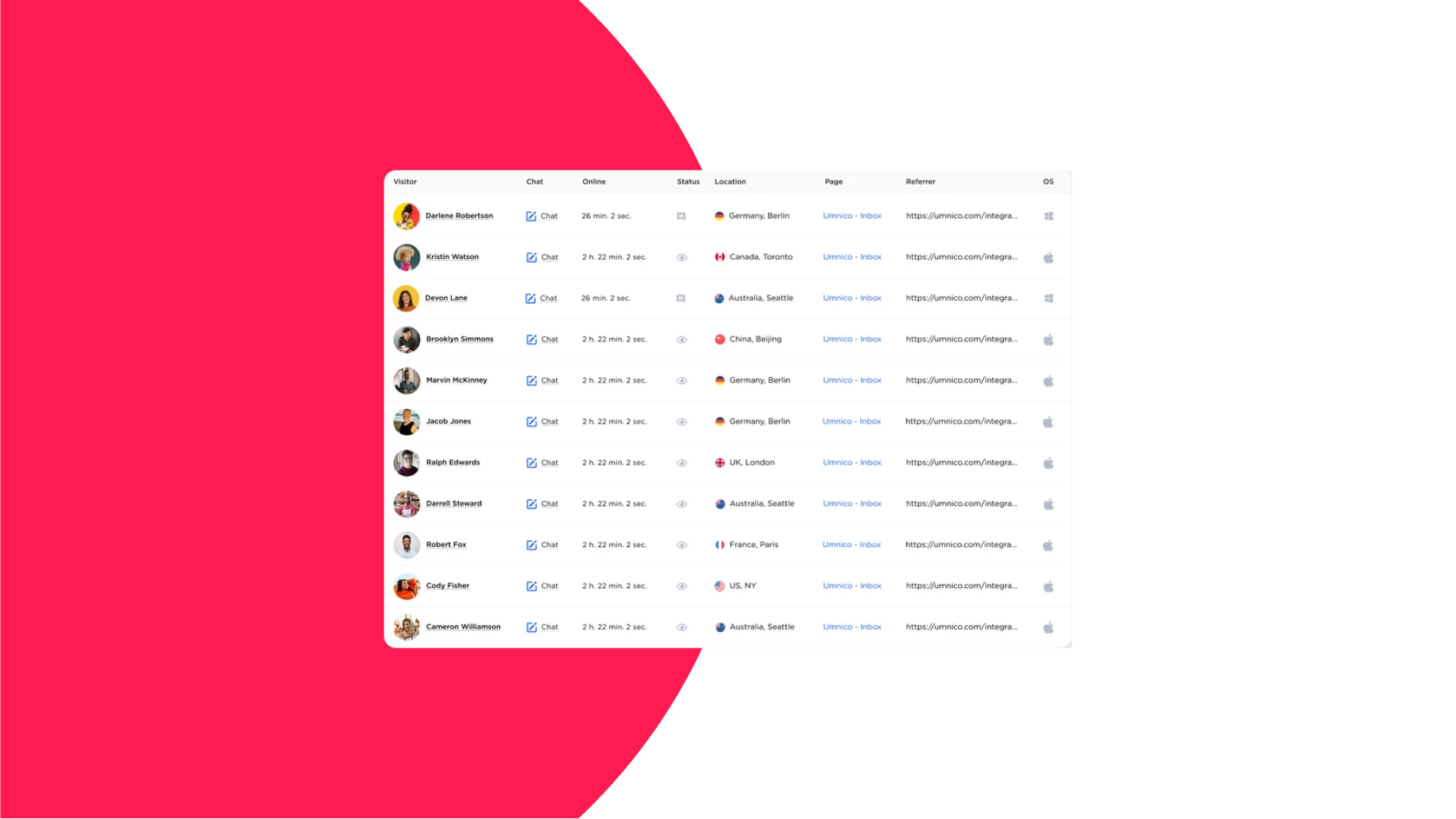Real-Time Marketing: How to Use it Effectively
Coming across the extensive opportunities of RTM for companies.

The growing dominance of social media and messengers among the tools we use to stay in touch with others, learn the latest news, and create content has led brands to fine-tune their marketing efforts for these channels and to come up with the concept of real-time marketing. Obviously, the essence of the real-time marketing (also called RTM) approach is in the name.
Real-time marketing involves building connections with customers instantly, based on breaking news and actual information. RTM allows a brand to tap into the current conversation and engage with customers in a way that feels authentic and timely.However, operating on less established channels than traditional marketing, RTM may not reach as broad an audience as traditional methods, while requiring marketing departments an ongoing attention and responsiveness to the media space.
Real-time marketing vs. traditional marketing
Real-time marketing and traditional marketing are two distinct strategies of customer engagement. Traditional marketing employs platforms like print media, television, radio, and billboards, focusing on building brand recognition and appealing to a broad audience. The advantages of such an approach include wide reach and effective enhancement of brand identity via well-established platforms.
Meanwhile, digital platforms like messengers and social media have brought the notion of immediacy and the idea of real-time marketing. It allows businesses to engage customers in live conversations and respond promptly to their activities and current events. Real-time marketing campaigns are agile, enabling companies to act based on customer feedback and market dynamics. What also sets real-time apart from traditional marketing is how it is less unidirectional — communication flows from the business to the audience and vice versa, promoting a dialogue and interaction, as well as receiving more customer feedback.
However, operating on less established channels than traditional marketing, RTM have risks of reaching as broad an audience as traditional methods, while requiring from marketing departments a constant attention and responsiveness to the media space.
Benefits of real-time marketing
Real-time marketing offers several benefits for businesses, including increased engagement, personalization, relevance, and authenticity.

- Increased engagement. RTM tactics allow brands to engage with their customers in the moment, which can lead to increased engagement. This means that customers are more likely to interact with the relevant content and visit websites and social media pages. Additionally, real-time marketing can help businesses in building stronger long-term relationships with their customers.
- Personalization and relevance. Real-time marketing enables businesses to tailor their communication and offers by using real-time insights into customer behavior and trends. By monitoring social media platforms and online conversations, businesses can identify trending topics or events and create content that is timely and relevant. Such an approach can help businesses to create a more relevant and meaningful experience for their followers.
- Agility. Real-time marketing allows businesses to be agile and responsive to changing market conditions or customer needs. Companies can quickly adjust their strategies or campaigns based on real-time feedback, ensuring that their messaging remains effective.
- Brand authenticity. Real-time marketing provides an opportunity for businesses to showcase their brand personality and authenticity. By engaging in real-time conversations with customers, companies can demonstrate their values, expertise, and commitment to customer satisfaction. For example, a brand could use social media to share behind-the-scenes content or to host live Q&A sessions with customers. All of these tactics help build deeper connections and trust.
By leveraging real-time data and insights, businesses can gain a competitive edge in the market. Real-time marketing allows companies to stay in the loop with the latest trends, identify emerging opportunities, and respond faster than their competitors. For example, a company that uses social media listening to track customer sentiment can quickly identify new product opportunities, while a business that uses real-time data to track sales trends can quickly adjust its marketing campaigns.
Examples of real-time marketing engagement
There are many ways companies can employ RTM to drive sales and engagement. For example, a company that runs a contest on social media during a live event is more likely to engage with customers who are already interested in the topic. By leveraging the excitement surrounding the event, the brand can generate buzz, increase social media engagement, and attract new customers.
Another example of RTM is its usage for decreasing the shopping cart abandonment rate. For example, a retailer can offer a personalized discount to customers who decide not to check out after adding items to their shopping cart. By personalizing its offers, a brand can show its customers that it understands their needs and interests, which not only encourages the customer to make the purchase but also fosters loyalty by demonstrating that they are valuable customers for the company’s business.
Real-time marketing success stories
Real-time marketing is a powerful tool that businesses can use to engage with their customers and achieve their marketing goals. Here are three prominent real-time marketing success stories:
‘BTS Meal’ by McDonald's
McDonald's partnered with the popular South Korean boy band BTS to launch a limited-edition "BTS Meal" in 2021. The campaign was a huge success, with over 1 million meals sold in the United States on the first day of launch. To promote the campaign, McDonald's used a variety of real-time marketing tactics. For example, they created and distributed engaging content on social media, including behind-the-scenes footage of the BTS Meal, interviews with the band members, and exclusive promotions. McDonald's also partnered with influencers to promote the meal to their followers. The BTS Meal campaign resonated with McDonald's target audience and generated excitement and buzz among it.
‘18 million retweets’ by Wendy’s
In 2017, a Twitter user named Carter Wilkerson tweeted at Wendy’s asking how many retweets it would take to get a year’s worth of free chicken nuggets. Wendy’s response was “18 million.” Wilkerson’s tweet quickly went viral, and within a few days, it had over 18 million retweets. Wendy’s honored its promise and gave Wilkerson a year’s worth of free chicken nuggets.

The campaign was a huge success for Wendy’s. It generated a lot of publicity for the brand, and it helped to boost Wendy’s sales. It also showed Wendy’s as a brand willing to interact with its customers in a meaningful way. The company used a variety of real-time marketing tactics to promote the campaign, including behind-the-scenes footage of Wilkerson’s journey to 18 million retweets, and humorous content of other users related to the campaign.
‘Wrapped’ by Spotify
Every year, Spotify launches an app marketing campaign called “Wrapped” that highlights users’ listening habits over the past year. The campaign is extremely popular, and it is one of the most anticipated events on social media. Gradually, Spotify began to focus more on the two-way relationship between users and artists, moving away from the emphasis on listening habits and preferences. Last year, Spotify featured 170 pre-recorded ‘thank you’ videos from artists to their top listeners. To view these videos, users needed at least three of their top 10 artists to submit a message, and each user could watch a maximum of 10 videos. Musicians and podcasters receive ‘Wrapped’ roundups that break down the listening personalities of their fans and reveal how many fans list them as top creators in their respective categories.
RTM tools and technologies
The goal of real-time marketing is to identify opportunities and engage with the audience in a timely and efficient manner. To support RTM efforts, some tools can help companies monitor data, analyze trends, and engage with customers effectively. The most suitable software for you, of course, varies depending on the company’s specific needs and budget.
Social media monitoring tools are designed to track social media conversations and offer insights into what people are saying about your brand, competitors, and industry. These tools can help identify trending topics, understand customer sentiment, and discover potential opportunities for engagement. When you come across someone mentioning your brand or a relevant keyword, you can leverage these tools to respond promptly with a helpful or engaging message. By utilizing social media monitoring tools, you can stay informed about the latest conversations surrounding your brand, enabling you to make data-driven decisions to improve your real-time marketing strategy.
Website analytics tools. These tools track website traffic and user behavior, providing you with insights into how people are interacting with your website. The data can be used to identify popular content, conversion rates, and areas for improvement. Once you know which pages are most popular, you can create targeted marketing campaigns for those pages. For example, Umnico’s website visitor analytics provides valuable information about those browsing your website in real time, as well as an opportunity to reach out to them first via a free live chat widget.

Omnichannel messaging and marketing automation platforms are designed to automate marketing tasks tasks tasks such as email communications, social media posting, and lead nurturing. By automating these tasks, you can free up your time to focus on more strategic initiatives. These platforms that allow you to create and send email campaigns, track email analytics, and segment your email list. This enables you to streamline your real-time marketing efforts and engage with your audience more effectively.
Customer data platforms (CDPs) are a type of software that helps businesses collect, unify, and manage customer data from a variety of sources. This data can include everything from customer demographics and purchase history to website behavior and social media interactions. CDPs use this data to create a single, unified view of each customer. This unified view can then be used to personalize marketing campaigns, deliver tailored experiences, and improve the overall customer journey.
Common challenges and how to overcome them
While real-time marketing is undoubtedly an approach that can potentially deliver valuable results, there are many common challenges that companies can potentially face.
- Data overload. Real-time marketing requires marketers to process and analyze large amounts of data from a variety of sources. This can be difficult, especially for startups and small firms with minimal funding. You may automate the gathering, analysis, and segmentation of customer data with the use of marketing automation software. This can free up time so that you may concentrate on activities that are more strategically important, including creating and implementing real-time marketing strategies.
- Creating relevant content fast. RTM initiatives must be relevant to your audience's present demands and interests in order to be effective. This can be difficult, especially if you are creating material from scratch. To save time, use pre-made templates and assets. Consider fresh and unique ways to engage with your target audience.
- Measuring results. Because real-time marketing initiatives sometimes incorporate several channels and touchpoints, determining their efficacy can be tricky. Marketing analytics software can assist you in tracking the performance of your real-time marketing efforts across several channels and devices.
Conclusion
Overall, real-time marketing can be a powerful tool for businesses of all sizes, but it is important to use it carefully and strategically. When used effectively, real-time marketing can help you connect with your customers on a deeper level, build stronger relationships, and drive sales.
If you are looking for a platform to automate your real-time marketing communications, consider Umnico. The omnichannel messaging platform merges conversations with customers across 25+ instant messengers, social media, chat widget, and email into a single window. The platform allows to optimize the work of marketers, sales and support teams, while providing managers with the insights into team performance and customers’ activity. Umnico’s basic version is completely free, so you can easily manage your real-time marketing campaigns and ensure that you are delivering the right messages to the right people at the right time.
You might be interested in similar topics
What is Conversational Marketing (Its Strategy, Benefits, and Examples)?
Emotional marketing and how to employ it properly
How to Build a Personal Brand in Tech: 6 Steps

Subscribe to Umnico news!
Be the first to get recommendations and up-to-date information
